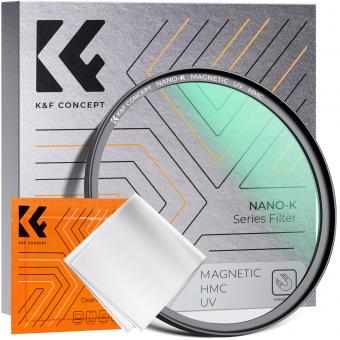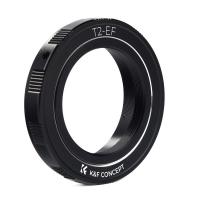How Do Electron Microscopes Work ?
Electron microscopes work by using a beam of electrons instead of light to magnify the sample being observed. The electrons are accelerated to high speeds using an electric field and focused onto the sample using magnetic lenses. As the electrons interact with the sample, they scatter and produce signals that are detected and converted into an image. The image is then displayed on a screen or captured digitally. Electron microscopes have much higher resolution than light microscopes, allowing for the visualization of extremely small details in the nanometer range.
1、 Electron beam generation and control
Electron microscopes work by utilizing the properties of electrons to image objects at a much higher resolution than traditional light microscopes. The key aspect of electron microscopes is the generation and control of an electron beam.
Electron beam generation begins with a heated filament, similar to the cathode in a traditional light bulb. This filament emits electrons due to thermionic emission. These emitted electrons are then accelerated towards an anode by applying a high voltage. The anode has a small hole, known as the electron gun, through which the electrons pass.
Once the electron beam is generated, it needs to be controlled and focused. This is achieved using a series of electromagnetic lenses. These lenses consist of coils that generate magnetic fields, which can manipulate the path of the electron beam. By adjusting the strength and position of these lenses, the electron beam can be focused onto the sample.
The latest advancements in electron microscope technology have focused on improving the resolution and imaging capabilities. One such advancement is the introduction of aberration correction techniques. Aberrations, which are distortions in the electron beam, can limit the resolution of the microscope. By using additional electromagnetic lenses and advanced algorithms, aberrations can be corrected, resulting in higher resolution images.
Another recent development is the incorporation of electron detectors that can capture different signals emitted by the sample. These detectors can detect secondary electrons, backscattered electrons, and even X-rays, providing valuable information about the sample's composition and structure.
In summary, electron microscopes work by generating and controlling an electron beam using an electron gun and electromagnetic lenses. The latest advancements in electron microscopy have focused on improving resolution through aberration correction techniques and incorporating advanced detectors for enhanced imaging capabilities.

2、 Specimen preparation and mounting
Specimen preparation and mounting is an essential step in the operation of electron microscopes. Electron microscopes work by using a beam of electrons instead of light to magnify and visualize specimens. These microscopes have the ability to achieve much higher magnification and resolution compared to traditional light microscopes.
In order to obtain clear and detailed images, the specimens need to be prepared and mounted properly. The process typically involves several steps. First, the specimen is fixed using chemical fixatives to preserve its structure and prevent any changes or degradation. This is followed by dehydration, where water is gradually removed from the specimen and replaced with an organic solvent. The specimen is then embedded in a resin or plastic material to provide support and stability during the imaging process.
After embedding, the specimen is sliced into ultra-thin sections using a specialized instrument called an ultramicrotome. These sections are typically around 50-100 nanometers thick, allowing the electron beam to pass through easily. The sections are then mounted onto a grid or a thin film, such as a carbon-coated copper grid, which acts as a support for the specimen.
Once the specimen is prepared and mounted, it is ready to be placed inside the electron microscope. The microscope uses electromagnetic lenses to focus the electron beam onto the specimen. As the beam interacts with the specimen, it scatters and interacts with the electrons present in the specimen, producing signals that are detected and converted into an image.
The latest advancements in specimen preparation and mounting techniques aim to improve the quality and preservation of specimens. For example, cryo-electron microscopy (cryo-EM) allows specimens to be imaged at extremely low temperatures, preserving their native structure and minimizing artifacts. Additionally, new methods for staining and labeling specimens are being developed to enhance contrast and enable the visualization of specific structures or molecules within the specimen.
In conclusion, specimen preparation and mounting are crucial steps in the operation of electron microscopes. Proper preparation ensures that the specimens are preserved, stable, and suitable for imaging. Ongoing advancements in this field continue to improve the quality and capabilities of electron microscopy, enabling scientists to explore the microscopic world with unprecedented detail and clarity.

3、 Electron-sample interaction and signal detection
Electron microscopes work based on the principles of electron-sample interaction and signal detection. These microscopes use a beam of electrons instead of light to magnify and visualize samples at a much higher resolution.
In electron-sample interaction, a beam of electrons is generated by an electron gun and accelerated towards the sample. As the electrons interact with the sample, several processes occur. The most important interaction is elastic scattering, where the electrons bounce off the atoms in the sample without losing energy. This scattering provides information about the sample's surface topography.
Another significant interaction is inelastic scattering, where the electrons transfer energy to the sample, causing excitation or ionization of atoms. This interaction gives insights into the sample's chemical composition and electronic structure. Inelastic scattering can also produce secondary electrons, which are low-energy electrons emitted from the sample's surface. These secondary electrons are collected and used to create an image of the sample's surface.
Signal detection is a crucial aspect of electron microscopy. The electrons that interact with the sample generate various signals, including backscattered electrons, transmitted electrons, and secondary electrons. These signals are detected using specialized detectors, such as scintillators or solid-state detectors. The detected signals are then amplified, processed, and converted into an image on a screen or photographic film.
The latest advancements in electron microscopy include the development of aberration-corrected electron lenses, which minimize distortions and improve resolution. Additionally, the introduction of scanning transmission electron microscopy (STEM) allows for simultaneous imaging and spectroscopy, providing detailed information about the sample's composition and structure.
Overall, electron microscopes work by utilizing electron-sample interactions and detecting the resulting signals. These techniques, combined with recent advancements, have revolutionized our ability to visualize and understand the nanoscale world.

4、 Image formation and magnification
Electron microscopes work based on the principles of image formation and magnification. Unlike light microscopes that use visible light to illuminate specimens, electron microscopes use a beam of electrons to create highly detailed images of objects at a much higher magnification.
In an electron microscope, a beam of electrons is generated by an electron gun and accelerated towards the specimen using electromagnetic lenses. The electrons pass through a series of apertures and lenses that focus and shape the beam before it reaches the specimen. As the electrons interact with the specimen, they undergo various interactions such as scattering, diffraction, and absorption.
The interactions between the electrons and the specimen produce signals that are detected and converted into an image. The most commonly used detection method is the secondary electron detection, where low-energy electrons emitted from the specimen's surface are collected and used to form the image. Other detection methods include backscattered electron detection and transmission electron detection.
To achieve high magnification, electron microscopes use electromagnetic lenses to focus the electron beam onto the specimen and then onto a fluorescent screen or a digital detector. The magnification is determined by the ratio of the size of the image formed on the detector to the size of the specimen.
In recent years, advancements in electron microscopy have led to the development of new techniques such as scanning transmission electron microscopy (STEM) and cryo-electron microscopy (cryo-EM). STEM allows for simultaneous imaging and elemental analysis of specimens, while cryo-EM enables the imaging of biological samples in their native, hydrated state.
Overall, electron microscopes provide scientists with a powerful tool to visualize and study the intricate details of various materials and biological specimens at a much higher resolution than traditional light microscopes.






































